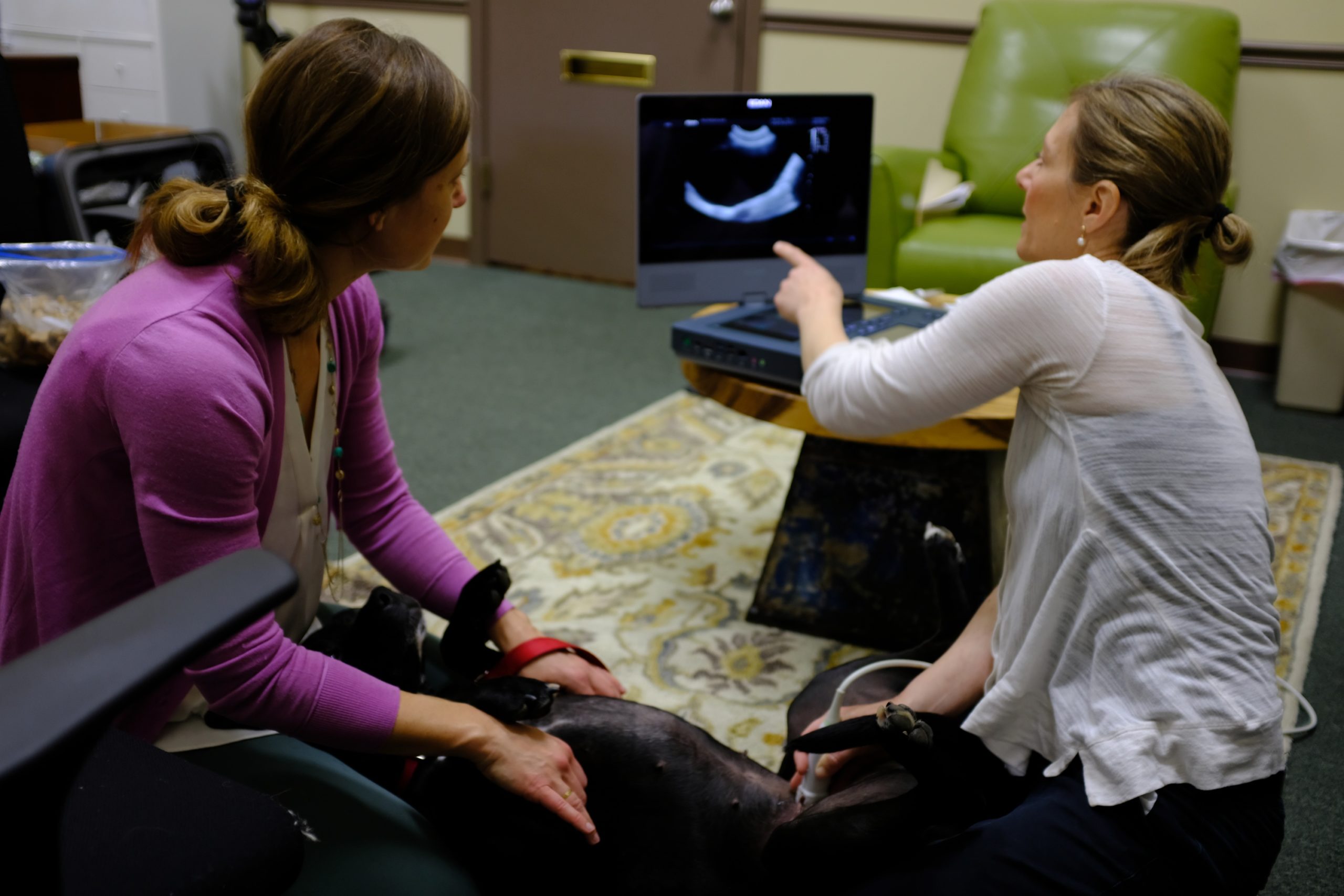Pet Ultrasound
Ultrasound
We are the only veterinary practice in the Boston area performing hospital-quality diagnostic ultrasounds at home for dogs and cats. Dr. Melinda Persson is an experienced and highly skilled ultrasonographer. Using a sophisticated Philips InnoSight portable ultrasound machine, we offer complete abdominal ultrasounds, providing an advanced level of diagnostics in the comfort of your own home.
At this time, we do not offer echocardiograms (a cardiac ultrasound), instead focusing our service on abdominal ultrasound.
About Ultrasound
Ultrasound uses sound waves to safely produce a live image of your pet’s internal organs. If we are concerned that your pet may be sick, an ultrasound can provide invaluable insight into the size, shape, and condition of the internal organs and about unexplained masses that the doctor may have palpated at an exam.

Dr. Persson rechecks Birdy’s bladder on ultrasound. She previously identified bladder stones and now confirms they were successfully dissolved using a prescription urinary diet.
For example:
- we can assess whether the organs are of a normal shape and size or whether they show signs of irregularity that can signal disease;
- we can assess the thickness of the intestinal walls for signs there could be inflammatory bowel disease, a common condition in pets;
- we can identify and measure masses in the abdomen and monitor their growth over time; and,
- we can examine your pet’s urinary bladder to evaluate whether the bladder wall is inflamed or whether your pet has developed bladder stones.
Preparing for Your Pet’s Ultrasound
Ultrasound is a sophisticated diagnostic procedure, but it can be challenging to obtain clear images. There are three things you should do to prepare for the visit and help us get the best possible results:
- Your pet should be fasted — no food after dinner the night before. Food causes the gastrointestinal system to produce gas in the intestines as it’s digesting food, and that intestinal gas can lead to very cloudy images of everything in the abdomen. Drinking water is fine — you should allow full access to water as usual.
- Your pet should have a full bladder — block your cat’s access to the litterbox, or keep your dog inside for 4 hours before the appointment. A full bladder is easier to see in the ultrasound, and in some cases, we may want to collect a urine sample from the bladder, so do not let your pet urinate for four hours before the visit.
- Give your pet sedatives before the visit — It is very important that you follow the directions to mildly sedate your pet before the ultrasound. Even pets who behave perfectly for an ultrasound benefit from the sedative because the relaxed muscles lead to better image quality. If you have not received the medications by 4 days before the appointment, let us know right away. If you need to hide the medicine in a treat or a small amount of food, you can use a small amount of tempting food. Just keep the portion very small.
During and After the Ultrasound
Dr. Persson likely will shave your pet’s belly at the visit to ensure the best possible images.
Dr. Persson may share some initial observations with you at the visit. After the visit, she will prepare her full report and share it with the other doctors involved in your pet’s care, who will then work with you on a plan for further care. If we are performing the ultrasound as a referral from another animal hospital, you should follow up with that hospital for your pet’s ongoing care.
As soon as the ultrasound is finished, you will be able to feed your pet as usual. Some pets eat too quickly when they’re hungry, so you may want to break the first meal up into smaller portions to avoid “scarf and barf.”
